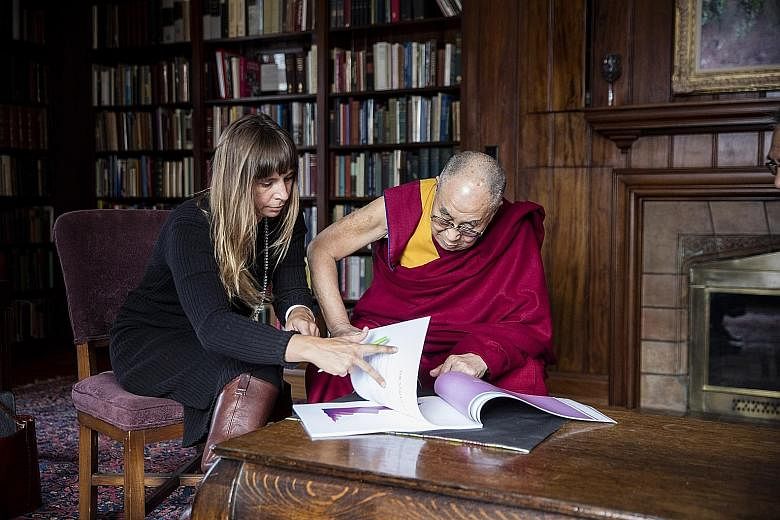ROCHESTER, MINNESOTA • The Dalai Lama, who tirelessly preaches inner peace while chiding people for their selfish, materialistic ways, has commissioned scientists for a lofty mission: to help turn secular audiences into more self-aware, compassionate humans.
He has ordered up a comprehensive Atlas of Emotions to help the more than seven billion people on the planet navigate the morass of their feelings in order to attain peace and happiness. "It is my duty to publish such work," he said.
To create this "map of the mind", as he called it, he reached out to a source Hollywood had used to plumb the inner workings of the human psyche.
Specifically, he commissioned his good friend Paul Ekman - a psychologist who helped advise the creators of Pixar's Inside Out, a 2015 animated film set inside a girl's head - to map out the range of human sentiments. Dr Ekman later distilled them into the five basic emotions depicted in the movie, from anger to enjoyment.
His daughter, Eve, also a psychologist, worked on the project as well, with the goal of producing an interactive guide to human emotions that anyone with an Internet connection could study in a quest for self-understanding, calm and constructive action.
"We have, by nature or biologically, this destructive emotion, also constructive emotion," the Dalai Lama said. "This innerness, people should pay more attention to, from kindergarten up to university level. This is not just for knowledge, but in order to create a happy human being. Happy family, happy community and, finally, happy humanity."
He paid Dr Ekman at least US$750,000 (S$1 million) to develop the project, which began with a request several years ago.
"'When we wanted to get to the New World, we needed a map,'" Dr Ekman recalled the Dalai Lama telling him. "'So make a map of emotions, so we can get to a calm state.'"
As a first step, Dr Ekman conducted a survey of 149 scientists (emotion scientists, neuroscientists and psychologists who are published leaders in their fields) to see where there was consensus about the nature of emotions, the moods or states they produce and related areas.
Based on the survey, he concluded that there were five broad categories of emotions - anger, fear, disgust, sadness and enjoyment - and that each had an elaborate subset of emotional states, triggers, actions and moods.
He then took these findings to a cartography and data visualisation firm, Stamen, to depict them in a visual and, hopefully, useful way.
"If it isn't fun, it's a failure," Dr Ekman said. "It's got to be fun for people to use."
Stamen's founder, Mr Eric Rodenbeck, has created data visualisation for Google, Facebook and MTV, as well as maps showing climate change and rising oceans. But he said the Atlas was the most challenging project he had worked on because it was "built around knowledge and wisdom rather than data".
Not surprisingly, getting scientists to reach a unified understanding of human emotions was difficult.
Dr Dacher Keltner, a professor of psychology at the University of California, Berkeley, also counselled Pixar on establishing the emotional characters for Inside Out and advised Facebook on its emoticons.
While he took part in Dr Ekman's survey, the two are not in complete agreement on the number of core emotions. He said the findings the Atlas was based on were not without flaws, but he saw the project as a good step.
Whether science project or tool for self-enlightenment, the Dalai Lama wants to keep religion out of it.
"If we see this research work as relying on religious belief or tradition, then it automatically becomes limited," he said. "Even if you pray to God, pray to Buddha, emotionally, very nice, very good. But every problem, we have created. So I think even God or Buddha cannot do much."
The Dalai Lama said he hoped the Atlas could be a tool for cultivating good in the world by defeating the bad within us. "Ultimately, our emotion is the real trouble-maker," he said. "We have to know the nature of that enemy."
NEW YORK TIMES

